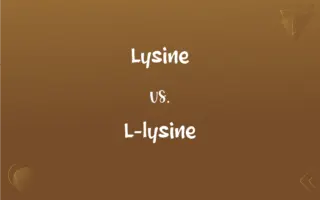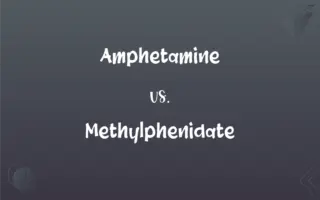Galvanizing vs. Tinning: What's the Difference?
Edited by Harlon Moss || By Janet White || Published on December 3, 2023
Galvanizing involves coating metal, typically steel or iron, with zinc to prevent rusting, while tinning involves applying a thin layer of tin to protect or enhance the metal.

Key Differences
Galvanizing uses zinc to coat metals, providing a protective barrier against corrosion. Whereas, tinning uses tin to coat metals, offering protection and sometimes enhancing solderability.
The primary purpose of galvanizing is to prevent rust and corrosion in steel or iron. While, tinning primarily aims to protect metals from corrosion and is often used to improve solderability in electronics.
Galvanizing typically involves dipping metal in molten zinc. In contrast, tinning can be achieved through electroplating, hot-dipping, or by applying tin paste.
Galvanized metals are known for their durability and are commonly used in construction and outdoor structures. However, tinned metals are often used in food containers, electronics, and roofing.
The zinc in galvanizing forms a protective layer that also provides sacrificial anode protection. Tin in tinning does not provide sacrificial protection but creates a non-toxic, solderable surface.
ADVERTISEMENT
Comparison Chart
Coating Material
Zinc
Tin
Main Purpose
Prevent rust and corrosion
Protect from corrosion, enhance solderability
Common Process
Hot-dip galvanizing in molten zinc
Electroplating, hot-dipping, or tin paste
Typical Applications
Construction, outdoor structures
Food containers, electronics, roofing
Protective Properties
Provides sacrificial anode protection
Creates a non-toxic, solderable surface
ADVERTISEMENT
Galvanizing and Tinning Definitions
Galvanizing
Involves immersing metal in molten zinc.
Galvanizing the fence ensures its longevity.
Tinning
Creates a non-toxic, food-safe surface on metals.
Tinning is used for coating kitchen utensils.
Galvanizing
Coating metal with zinc to prevent corrosion.
The steel beams were galvanized to prevent rust.
Tinning
Often used to prevent corrosion in metals.
Tinning is common in food-grade metal containers.
Galvanizing
Provides a durable, protective barrier.
Galvanizing is essential for outdoor metal structures.
Tinning
Can be done through electroplating or hot-dipping.
The components were tinned using an electroplating process.
Galvanizing
Often used in construction and infrastructure.
The bridge was built with galvanized steel.
Tinning
Applying a thin layer of tin to a metal.
Tinning the copper wires improves their solderability.
Galvanizing
To stimulate or shock with an electric current.
Tinning
Enhances solderability in electronic components.
Tinning leads to better connections in electronics.
Galvanizing
To arouse to awareness or action; spur
"The country was galvanized in the weeks and months after 9/11" (Davis Phinney).
Tinning
Symbol Sn A crystalline, silvery metallic element obtained chiefly from cassiterite, and having two notable allotropic forms. Malleable white tin is the useful allotrope, but at temperatures below 13.2°C it slowly converts to the brittle gray allotrope. Tin is used to coat other metals to prevent corrosion and is a part of numerous alloys, such as soft solder, pewter, type metal, and bronze. Atomic number 50; atomic weight 118.71; melting point 231.93°C; boiling point 2,602°C; specific gravity (gray) 5.77, (white) 7.29; valence 2, 4. See Periodic Table.
Galvanizing
To coat (iron or steel) with rust-resistant zinc.
Tinning
Tin plate.
Galvanizing
Present participle of galvanize
Tinning
A container or box made of tin plate.
Galvanizing
The process by which something is galvanized.
Tinning
A container for preserved foodstuffs; a can.
Galvanizing
Affected by emotion as if by electricity; thrilling;
Gave an electric reading of the play
The new leader had a galvanic effect on morale
Tinning
The contents of such a container.
Galvanizing
Offers sacrificial anode protection against rust.
Galvanizing protects the underlying metal from corrosion.
Tinning
To plate or coat with tin.
Tinning
Chiefly British To preserve or pack in tins; can.
Tinning
Of, relating to, or made of tin.
Tinning
Constructed of inferior material.
Tinning
Spurious.
Tinning
Present participle of tin
Tinning
A covering or lining of tin.
Tinning
The act, art, or process of covering or coating anything with melted tin, or with tin foil, as kitchen utensils, locks, and the like.
Tinning
The covering or lining of tin thus put on.
Tinning
The application of a thin layer of soft solder to the ends of wires before soldering them;
Careful tinning of the ends of wires results in a better joint when you solder them
Tinning
The application of a protective layer of tin
FAQs
How is galvanizing done?
Often through hot-dip in molten zinc.
Why is zinc used in galvanizing?
For its corrosion-resistant properties.
What is tinning?
Applying a thin layer of tin to metal.
What's the purpose of tinning?
To protect metal and enhance solderability.
What is galvanizing?
Coating metal with zinc to prevent corrosion.
Where is galvanizing mostly used?
In construction and outdoor structures.
Does galvanizing make the metal heavier?
Yes, due to the added layer of zinc.
How long does galvanized metal last?
It can last decades, depending on conditions.
What's the common method for tinning?
Electroplating, hot-dipping, or tin paste application.
What are typical uses of tinning?
In food containers, electronics, and roofing.
Does tinning affect metal conductivity?
It can slightly alter conductivity.
What metals can be galvanized?
Mostly steel and iron.
Is tinning safe for food containers?
Yes, it creates a non-toxic, food-safe surface.
Can tinning improve electrical connections?
Yes, by enhancing solderability.
Is galvanized metal rust-proof?
It's highly rust-resistant but not entirely rust-proof.
Are there any alternatives to tinning?
Yes, like nickel plating for certain applications.
Can tinned metal be used outdoors?
Yes, but it's less durable than galvanized metal in outdoor conditions.
Can galvanized metal be painted?
Yes, but it requires proper surface preparation.
Is tinning reversible?
No, it's a permanent coating.
Does galvanizing affect metal strength?
It does not significantly affect the metal's strength.
About Author
Written by
Janet WhiteJanet White has been an esteemed writer and blogger for Difference Wiki. Holding a Master's degree in Science and Medical Journalism from the prestigious Boston University, she has consistently demonstrated her expertise and passion for her field. When she's not immersed in her work, Janet relishes her time exercising, delving into a good book, and cherishing moments with friends and family.
Edited by
Harlon MossHarlon is a seasoned quality moderator and accomplished content writer for Difference Wiki. An alumnus of the prestigious University of California, he earned his degree in Computer Science. Leveraging his academic background, Harlon brings a meticulous and informed perspective to his work, ensuring content accuracy and excellence.




































































